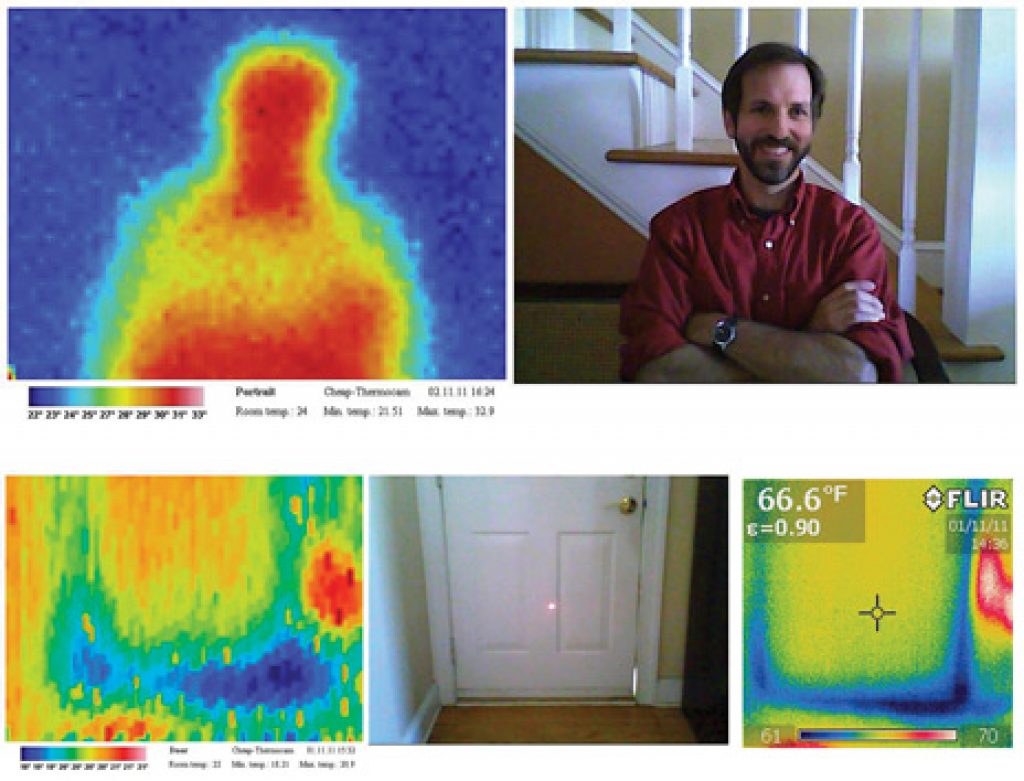To date, the bulk of embedded vision applications I've written about have focused their spectral attention on visible light frequencies, predominantly because they employ the same conventional image sensors found in digital still and video cameras, webcams, smartphones and tablets, computers and displays, and the like. However, plenty of embedded vision functions also exist that work outside the visible spectrum; consider for example the infrared transmitter and matching image sensor used in Microsoft's Kinect, or the subject of this particular writeup, thermal imaging used to discern body heat, unwanted heat leaks, and the like.
The downside of a non-conventional imaging system is that, because it's not able to leverage high volume cost efficiencies, it tends to be quite expensive. That's what IEEE Spectrum writer David Schneider recently discovered when a home energy audit suggested that his utility bills were significantly higher than they should be. In attempting to locate poor insulation patches, cracks in doors and windows, and the like, he found a number of thermal cameras that unfortunately cost several thousand dollars, a fiscal impact that would notably postpone the desired return-on-investment point of any repairs he might choose to make.
A bit more web research fortunately also uncovered the instructions for building a ~$200 camera called the Cheap Thermocam. The method by which it achieves its bill-of-materials cost reduction and the tradeoffs involved will be readily apparent to anyone who's (for example) used a line sensor to implement a scanner or camera, versus a full-frame sensor. As Schneider writes:
The thermocam uses what you might think of as a single-pixel infrared sensor: Melexis's MLX90614‑DCI $52 from Future Electronics. Note: Buy only the DCI version, which has high sensitivity and a very narrow field of view). That sensor is attached to a simple pan-and-tilt mechanism, which does a line-by-line scan to produce an image. A laser pointer (also mounted on the pan-and-tilt) and a webcam affixed to the main enclosure allow the thermocam to generate a matching picture of the area scanned.
The downside: capturing each thermal image takes several minutes, which is not only time-consuming but is also incompatible with fast- (or frankly even slow-) moving subjects. But the budgetary upside can't be ignored, either. I commend Schneider's article, entitled "IR Eye", to your inspection. Among other things, I think you'll find interesting the deviations (and reasons for them) that Schneider made to the foundation design developed by two 18-year-old students, Max Ritter and Mark Kohl, from Mindelheim, Germany.


